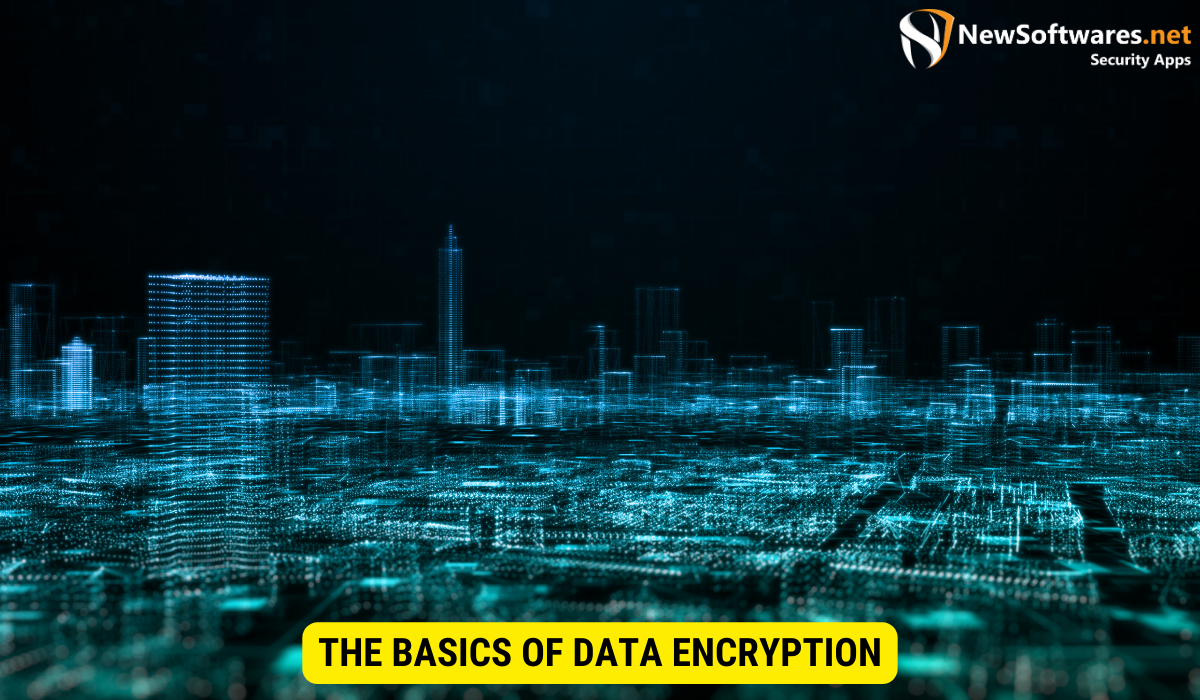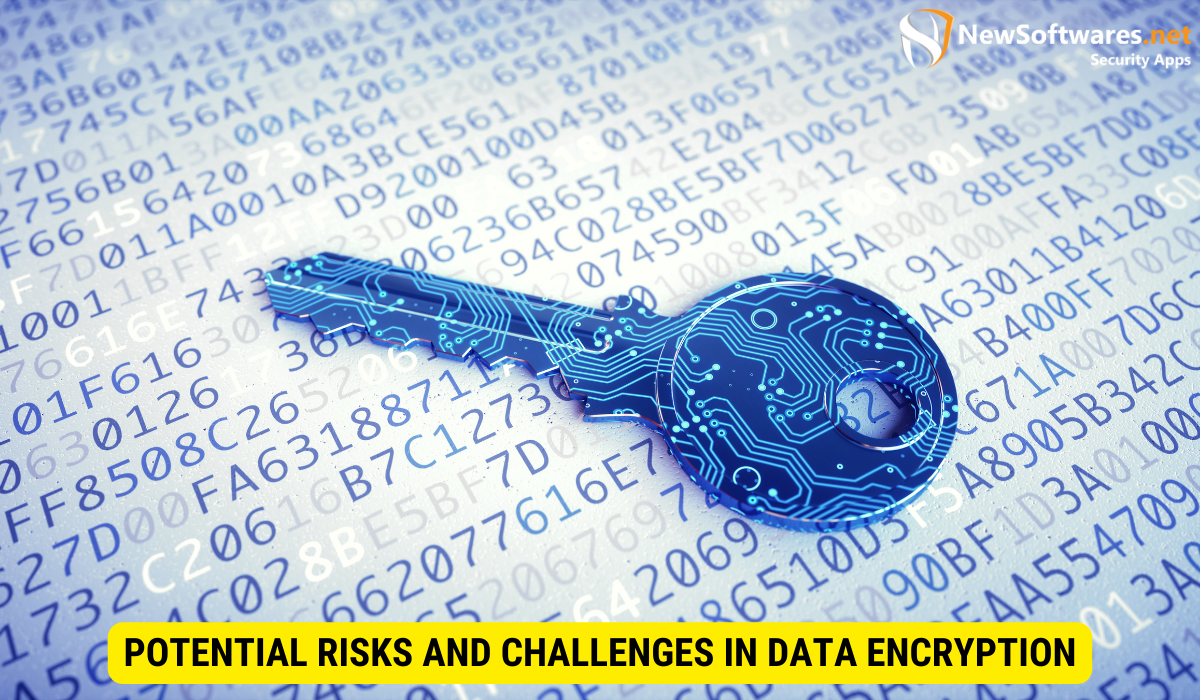Data encryption plays a crucial role in ensuring the security and confidentiality of sensitive information. One method of encryption involves using the sender’s private key as a means of protection. I will provide a comprehensive understanding of the security service provided by encrypting data with the sender’s private key. We will delve into the basics of data encryption, the role of private keys, the process of encrypting data, the security benefits, and potential risks and challenges associated with this approach.
The Basics of Data Encryption

Data encryption is the process of transforming plaintext into ciphertext, making it unintelligible to unauthorized users. This cryptographic technique ensures the confidentiality and integrity of data during transmission or storage. Encrypted data can only be decrypted and understood by authorized parties possessing the appropriate decryption key.
Defining Data Encryption
Data encryption is a vital method to protect sensitive information from unauthorized access or interception. By using complex algorithms, plaintext is converted into ciphertext, which can only be converted back into readable form with the correct decryption key. Encryption acts as a safeguard against data breaches and unauthorized data access, essential for maintaining data privacy and security.
Importance of Data Encryption in Security Services
Encrypting data with the sender’s private key significantly enhances the security of sensitive information. Encryption provides an additional layer of protection, ensuring data privacy even if it falls into the wrong hands. This is especially crucial when transmitting sensitive data over public networks, where interception and unauthorized access are potential risks.
Furthermore, data encryption plays a vital role in various security services. For example, in the field of e-commerce, encryption is essential for securing online transactions. When a customer enters their credit card information on a website, encryption ensures that the data is securely transmitted to the payment gateway, protecting it from being intercepted by hackers.
In the healthcare industry, data encryption is crucial for protecting patient information. Electronic health records contain sensitive data such as medical history, diagnoses, and personal information. Encrypting this data ensures that only authorized healthcare professionals can access and view it, preventing unauthorized individuals from obtaining sensitive medical information.
Data encryption is also widely used in the banking sector. When customers access their online banking accounts or make transactions, encryption ensures that their financial information remains secure. This helps to prevent identity theft and fraud, as encrypted data is much more challenging for cybercriminals to decipher.
Moreover, data encryption is essential for safeguarding government and military communications. Classified information and sensitive government data are encrypted to prevent unauthorized access and protect national security. Encryption algorithms used in these sectors are highly sophisticated and constantly evolving to stay ahead of potential threats.
In conclusion, data encryption is a fundamental aspect of modern cybersecurity. It provides a crucial layer of protection for sensitive information, ensuring data privacy and security. From e-commerce to healthcare and government sectors, encryption plays a vital role in safeguarding data from unauthorized access and interception. As technology advances, encryption techniques continue to evolve, staying one step ahead of potential threats and ensuring the confidentiality and integrity of data.
The Role of Private Keys in Data Encryption
Private keys play a pivotal role in data encryption, particularly when using asymmetric cryptography. Asymmetric encryption utilizes a pair of keys, namely a public key and a private key. While the public key is freely available to anyone, the private key remains exclusive to the owner.
What is a Private Key?
A private key is a unique and confidential cryptographic key that is generated alongside a public key. It is securely stored and kept secret by the key owner. The private key is used to decrypt data that has been encrypted using the corresponding public key.
How Private Keys Work in Data Encryption
When a sender wishes to encrypt data with their private key, they use their private key to digitally sign the message. This process involves applying a mathematical function to the data, creating a digital signature unique to the sender. The digital signature provides integrity and authentication, ensuring that the recipient can verify the message’s origin and integrity.
The Process of Encrypting Data with the Sender’s Private Key
The process of encrypting data with the sender’s private key involves several steps to ensure secure transmission.
Steps Involved in Encrypting Data
- Generate a unique pair of public and private keys: A sender first generates a pair of keys, keeping the private key secure while sharing the public key with intended recipients.
- Prepare the message: The sender creates the message they wish to transmit, ensuring it is in plaintext form.
- Encrypt the message: The sender encrypts the message using their private key, forming a digital signature to verify the authenticity and integrity of the data.
- Transmit the encrypted message: The sender then transmits the encrypted message along with the digital signature.
- Decrypting the message: The recipient uses the sender’s public key to decrypt the digital signature, ensuring the data’s integrity and confirming the sender’s identity.
- Verification and decryption: Finally, the recipient decrypts the encrypted message using their own private key, converting it back to plaintext.
Understanding the Sender’s Role in Encryption
The sender plays a crucial role in the encryption process, as they are responsible for generating the key pair, encrypting the message using their private key, and transmitting the encrypted data along with the digital signature. The digital signature provides authenticity and integrity, ensuring the recipient can verify the message’s legitimacy.
The Security Benefits of Using the Sender’s Private Key for Encryption
Utilizing the sender’s private key for data encryption offers several significant security benefits.
Enhanced Data Protection
Encrypting data with the sender’s private key provides an additional layer of protection against unauthorized access. Even if the encrypted data is intercepted, it remains secure as only the intended recipient possessing the corresponding public key can decrypt and access the plaintext information. This ensures the confidentiality and integrity of the data is preserved.
Prevention of Unauthorized Access
The use of the sender’s private key for encryption prevents unauthorized individuals from tampering with the data during transmission. The digital signature created by the private key provides authenticity and ensures the recipient can verify the message’s integrity and the sender’s identity. This feature is crucial, particularly when transmitting sensitive information over unsecured networks.
Potential Risks and Challenges in Data Encryption

While encrypting data with the sender’s private key offers enhanced security, it also poses potential risks and challenges that organizations must address.
Key Management Issues
Effective key management is vital for secure data encryption. The sender’s private key must be carefully protected and kept confidential. Any compromise or unauthorized access to the private key can result in a breach of data security. Organizations must establish robust key management practices to mitigate this risk and ensure the safe storage and distribution of private keys.
Potential Vulnerabilities in Data Encryption
Data encryption is not foolproof and can still be vulnerable to attacks if improper algorithms, weak key lengths, or flawed implementations are employed. Organizations must continually assess and update their encryption technologies to stay ahead of evolving threats.
Key Takeaways
- Data encryption is a vital method for safeguarding sensitive information from unauthorized access and interception.
- The sender’s private key plays a crucial role in data encryption, providing additional security through digital signatures.
- The process of encrypting data with the sender’s private key involves generating a key pair, encrypting the message, and transmitting it along with the digital signature.
- Using the sender’s private key enhances data protection and prevents unauthorized access, ensuring data confidentiality and integrity.
- However, organizations must address key management issues and potential vulnerabilities in data encryption to maintain effective security measures.
FAQs
What is data encryption?
Data encryption is the process of transforming plaintext into ciphertext to protect sensitive information from unauthorized access or interception. Encryption ensures data confidentiality and integrity by converting data into an unreadable form, only accessible with the appropriate decryption key.
How does the sender’s private key enhance data security?
The sender’s private key is used to encrypt the data and create a digital signature. This digital signature ensures the authenticity and integrity of the message, preventing unauthorized tampering and ensuring only the intended recipient can access and decrypt the data.
What are the potential risks in data encryption?
Key management issues pose a significant risk in data encryption, as a compromised private key can result in a breach of data security. Additionally, vulnerabilities in encryption algorithms, weak key lengths, or flawed implementations may expose encrypted data to potential attacks.
How can organizations mitigate the risks associated with data encryption?
Organizations can mitigate risks by implementing robust key management practices, ensuring the secure storage and distribution of private keys. Regular assessments and updates of encryption technologies are also crucial to address potential vulnerabilities and maintain effective security measures.
Why is data encryption important in security services?
Data encryption provides a vital security service by protecting sensitive information from unauthorized access or interception. Encryption safeguards data privacy and ensures the integrity and confidentiality of information during transmission or storage.
Conclusion
Encrypting data with the sender’s private key offers a powerful security service, protecting sensitive information from unauthorized access and interception. Understanding the basics of data encryption, the role of private keys, the encryption process, and the security benefits is essential for organizations aiming to enhance their data security measures. However, it is crucial to address potential risks and challenges associated with data encryption to maintain effective security practices. By utilizing encryption technologies and robust key management systems, organizations can ensure the confidentiality, integrity, and authenticity of their data.
